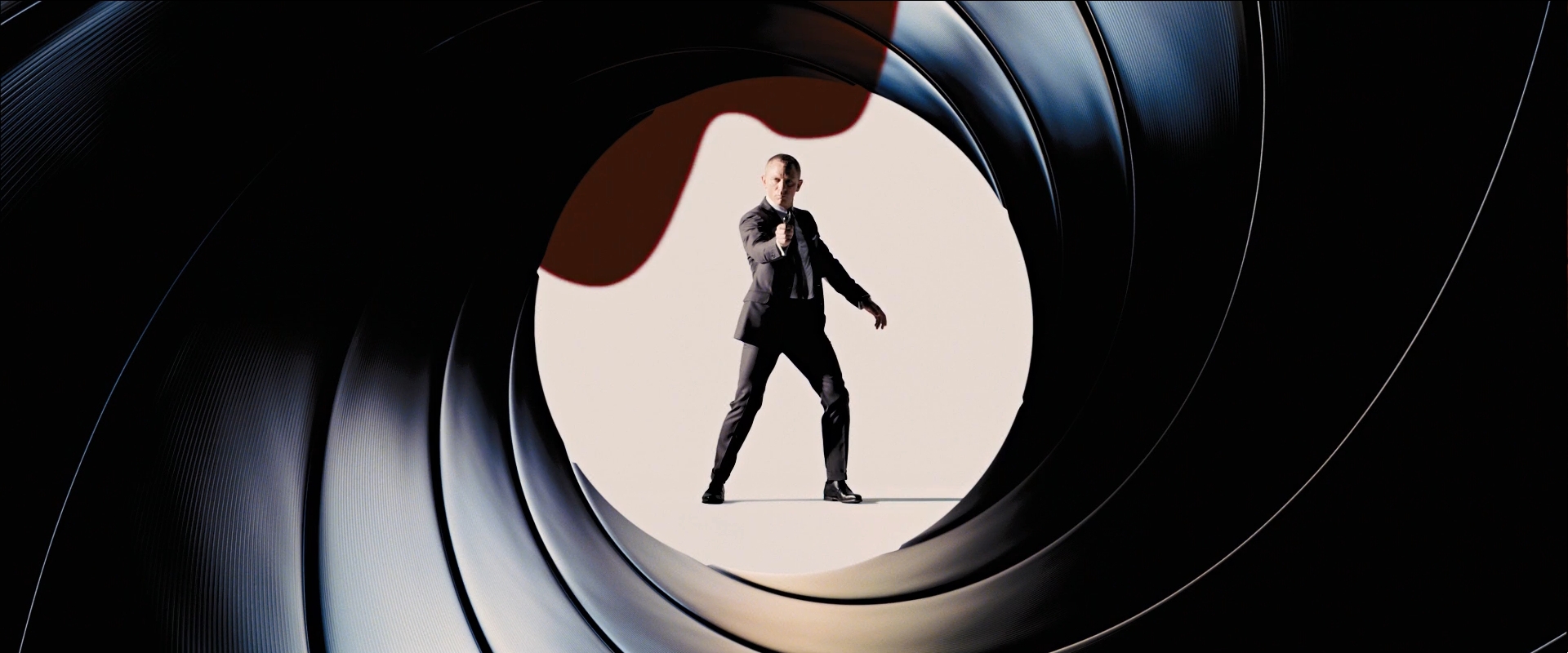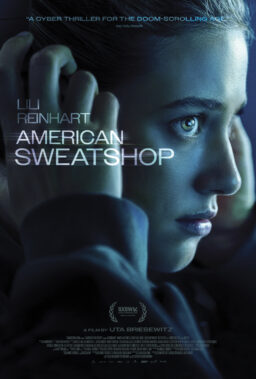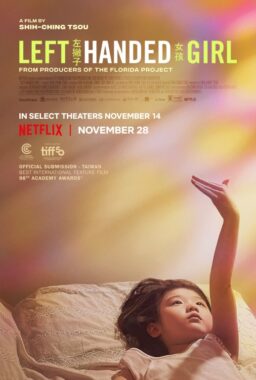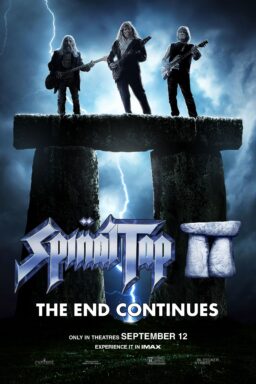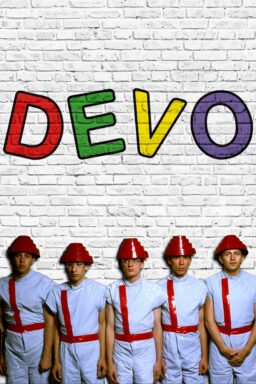As exciting brass fills your ears, a man strolls purposefully onto the screen from stage left, his striding body framed by a circle. He turns to face the audience, aims his weapon at you, and unleashes all his fury, the deep crimson blood engulfing the screen. You, the viewer, are now dead, killed by the ultimate assassin, who has spent decades building a franchise so successful he is known to even the smallest children.
You are undoubtedly picturing the famous entrance of the silver screen’s number one super spy, but the above paragraph is actually describing the opening title sequence of the 1986 slasher “Friday the 13th, Part VI: Jason Lives.” Granted, Tom McLoughlin’s beloved bloodbath is an exception in the ongoing series, using its running time to take somewhat of a meta look at the franchise and the slasher genre a whole decade before “Scream,” but it’s a sign of just how widely recognized James Bond is; not only the character, but one of the visual and aural hallmarks of the then 16-strong motion picture series: the gun barrel introduction.
Now numbering at 24 films, with the 25th due in 2020, the Bond saga has used the gun barrel as a crucial part of the 007 formula, only recently playing with audience expectations during the recent Daniel Craig soft reboots. But while the gun barrel has not changed a great deal visually, one element that has evolved constantly is the music, often used by the composer to put an immediate stylistic stamp on the score and to let the audience know exactly what they’re in for.
Interestingly, the first gun barrel—in 1962’s “Dr. No”—begins not with music but with a curious clockwork or music box effect, almost winding Bond up as he walks into view before letting him rip. As the blood flows down the screen and the “eye” shakes, the familiar midsection of the James Bond theme—written by Monty Norman and arranged by John Barry—explodes, instantly identifying to the audience that they are in for one hell of a ride, especially as in this case the theme continues over the majority of the subsequent title sequence.
By the time “From Russia With Love” came around in 1963, Barry had a firm solo grasp on Bond. The resulting gun barrel opened not with sound effects but with the mighty crash fans are used to, those two three-note clusters sounding like screaming bullets. As Bond strides in he’s accompanied by the vamp section of the theme, the main riff of the theme kicking in just before 007 “kills” the viewer. Barry refined this for “Goldfinger” in 1964 and “Thunderball” in 1965, giving the brass more prominence for the intro section, and with the latter film timing the death transition perfectly—this time the riff hits right as Sean Connery shoots at the screen, perhaps appropriately given that this was the actor’s first performance in the sequence (the previous three featured stuntman Bob Simmons).
Barry’s cues were wholly representative of the music he was writing for the series at the time: dangerous and seductive, the pure essence of cool. Connery’s Bond was the same, a man who you would happily let romance you knowing you were unlikely to survive even the most fleeting of relationships, and Barry’s gun barrels personified that to a tee. By the time “On Her Majesty’s Secret Service” came around in 1969, Bob Moog’s Moog synthesizer had hit the music world with a bang, and as such Barry chose to utilize it to introduce George Lazenby. While the cue begins in the traditional way, the vamp is introduced over a credit for Albert R. Broccoli and Harry Saltzman, meaning that when Bond appears he’s scored by the main riff on Moog, which gives the cue a different mood that certainly represented Barry’s groundbreaking score, considered by many to be the franchise’s best.
Even after The Beatles, George Martin had his work cut out for him with 1973’s “Live and Let Die“: Not only did he need to bring a fresh new sound to Bond that wasn’t just a John Barry copy, he was also tasked with musically introducing a brand new 007 in the guise of Roger Moore. Martin’s gun barrel cue was both rough and smooth; the edgy vamp was as seductive as Jane Seymour’s Solitaire, but the real gem was doubling up the guitar riff with brass, bringing a jazzy element to what was essentially Bond doing Blaxploitation. It’s an exceptional preview of what is one of the strongest scores in the 007 canon, no matter what you think of the film.
Marvin Hamlisch decided to forego the opening “bullet” hits when he scored 1977’s “The Spy Who Loved Me,” giving a fairly hard edge sound to the gun barrel that continues throughout the sparse score. The cue ends with a heavy synth that also precludes its use in some of the more colorful cues, such as ‘Ride to Atlantis,’ but it doesn’t really come across as anything but middling. Barry alternated Martin and Hamlisch with 1975’s “The Man With The Golden Gun” and 1979’s “Moonraker,” and his efforts were fairly uneventful, something you couldn’t say for Bill Conti and 1981’s “For Your Eyes Only.” Conti’s score has been oft-criticized as being “disco-fied” and his gun barrel does nothing to dispel this, the funk beat under Bond’s walk making it feel like he should be strutting like John Travolta in “Saturday Night Fever.”
Given Barry’s stature, it comes across, intentional or not, that Barry is there for what is now considered the classic Bond sound, as an alternative to the more modern approaches. Remaining with the series until 1987, even his swan song—”The Living Daylights,” which introduced Timothy Dalton in the role— retains that famous Barry sound, a trademark in its own right. The first composer in the post-Barry era was Michael Kamen, who had previously stunned the industry with his innovative and exhilarating scores to the blockbuster action films “Lethal Weapon” and “Die Hard.”
1989’s “License To Kill” was absolutely influenced by those films, going for a more realistic (in relative terms) story. His gun barrel cue opens the film and score in spectacular fashion, discarding the vamp in favor of an extended percussion cluster that builds up to the turn-and-shoot, upon which Vic Flick’s guitar is quickly doubled by strings. Explosive.
Explosive is one thing, but divisive is the best world to describe the score to 1995’s “GoldenEye.” Composed by regular Luc Besson collaborator Eric Serra and introducing the new Bond in the shame of Irishman Pierce Brosnan, the score embraced European sensibilities and the embryonic EDM movement instead of John Barry, and, well, some people hated Serra for it, and there is still bitterness. His gun barrel cue is unlikely to change anyone’s view, opening with a shrill synth playing the gunfire percussion before a slinky rendition of the vamp acts as the rhythm section. As Brosnan fires, you can hear the Bond theme under there, this time played by percussion, a brave move by Serra. It’s an acquired taste for sure. Film score expert Lukas Kendall understands how fans feel, stating in an email interview that “the opening has been updated and tweaked to try to modernize the formula, but I think the filmmakers run the risk of alienating the audience if they alter it too drastically.”
Perhaps it was a response to that which drove Eon’s choice for the next composer to take on Bond, with MGM admitting that Serra was an experiment that didn’t quite work. David Arnold was a young British composer who had not only tackled big action-orientated projects with “Stargate” and “Independence Day” but was also working on Shaken and Stirred, an album of James Bond covers using contemporary artists such as Aimee Mann and Iggy Pop. Arnold would receive plaudits from none other than John Barry about the reworking of his music, and was told by the composer that he was the “rightful heir.”
So, when Eon and Barry failed to agree on terms for the latter to score 1997’s “Tomorrow Never Dies,” Arnold signed on. His score mixed the classic and the contemporary; retaining the melodic lines of Barry while adding loops and synths, and its reputation has exceeded that of the actual film. Appropriately, Arnold’s gun barrel is a literal return to the dangerous cool of Barry, with Brosnan walking on to a satisfyingly smooth rendition of the Bond vamp. However, as he turns and shoots, instead of using the riff or the bridge he instead uses the final section of the original “Dr. No” title sequence cue. This was faded out in the 1962 film’s opening but scored the final part of the film’s end credits, and features a sequence of four ascending brass clusters, and it gives the gun barrel a more open ending. “No one had done it before,” Arnold said on Twitter about his cue, “and it felt like a question mark … what’s next, rather than ‘TaDaaaaaa.”
With the successful integration of overt electronics into Arnold’s score, he leaned on that for the next two films, 1999’s “The World Is Not Enough” and 2002’s “Die Another Day.” The “Enough” gun barrel is certainly reflective of that, with the opening vamp backed by a futuristic synth beat that gives it a fresh feel without being obvious. For “Die Another Day,” however, the electronics took over the henhouse. Arnold opens the cue with Barry’s bullets, but when the vamp introduces Bond the theme is somewhat obscured by a frantic electronic beat that continues when the gunshot is made and the riff comes in. So, you have the vamp, the beat, and the riff all weaved together, and it has quite a disorienting feel. Despite what you may think about the gun barrel, though—or the film for that matter—the score is excellent. When it came to the next picture, however … well, things were a bit different.
Arnold was back to score “Casino Royale” (2006) but the gun barrel wasn’t, not really. Being that the film was a prequel, the producers opted to open the film with Bond on a mission to obtain his license to kill, with the gun barrel visual used slyly as a transition between that sequence and the opening titles. Appropriately, the Bond theme only appeared occasionally throughout Arnold’s score, finally being played in full at the end of the film when he “became” James Bond, and shot someone in the legs with a machine gun. 2008’s “Quantum of Solace” was similar with regards to the score, as the gun barrel only returned at the end of the film. Nevertheless, it was a typical arrangement.
Interestingly, Arnold’s music would continue to accompany the gun barrels even when he wasn’t scoring the films. For 2012’s “Skyfall” and 2015’s “Spectre,” Thomas Newman was brought it to work with director Sam Mendes, his collaborator on films such as “American Beauty” and “Revolutionary Road,” however his approach to the James Bond theme was to base it on arrangements by Arnold, mainly the finale cue for “Casino Royale,” entitled ‘The Name’s Bond … James Bond.’ Like “Quantum,” “Skyfall” ended with the gun barrel, while “Spectre” opened with it, but both were based on Arnold’s cue. It’s a credit to David Arnold that his interpretation of the classic John Barry arrangement of Monty Norman’s theme is valued so highly.
The attention now turns to the future, specifically Cary Joji Fukunaga’s “Bond 25.” As production continues, the speculation over who might be engaged to score the film has been silenced with the announcement of Dan Romer, who had previously collaborated with Fukunaga on “Beasts of No Nation” and the Netflix series “Maniac.” Romer’s appointment offers an exciting prospect, certainly one that’s unpredictable, but we can be almost certain that the first note of Romer’s music we hear will be over the gun barrel. From there, we can try and deduce what his approach to James Bond will be. With the middling reception to Thomas Newman’s scores and “Spectre” in general, perhaps what James Bond really needs is a fresh voice, and someone who isn’t afraid to shock the living daylights out of people— starting with that gun barrel.
